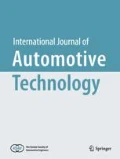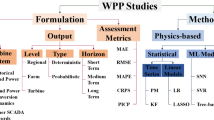Abstract
Most of the parameters needed to predict Nitrogen Oxides (NOx) emissions, for example, combustion temperature, oxygen concentration and in-cylinder composition ratio, can be predicted by phenomenological 0-D prediction model if accurate EGR rates are provided. However, it is difficult to predict the EGR rate itself accurately by the model, so the EGR rate is predicted by the temperature measurement method. Although this method predicts EGR rates very accurately and quickly, there are some problems such as thermocouple failures and the difficulty in applying to mass production engines, so it is necessary to predict EGR rates by another method. The deep learning method follows an inductive methodology that extracts common characteristics of data based on a lot of data themselves. Therefore, although it requires a lot of experimental data, it has an advantage of high accuracy that can be obtained without any feature engineering. In this study, the EGR rate, which was difficult to predict in the past, was predicted by making various models using the deep learning method. Finally, EGR rate was predicted with a high accuracy of R-square 0.9994 and root mean squared error 0.0692 using a deep learning method at 1500 rpm and bmep 4, 6 and 8 bar. This study can be used as a basic study to predict EGR rates in transient and RDE conditions.
Similar content being viewed by others
Abbreviations
- AFR:
-
air-fuel ratio
- BMEP:
-
brake mean effective pressure
- DNN:
-
deep neural network
- ECU:
-
engine control unit
- EGR:
-
exhaust gas recirculation
- ELU:
-
exponential linear unit
- NOx:
-
nitrogen oxides
- PM:
-
particulate matters
- RDE:
-
real driving emissions
- RELU:
-
rectified linear unit
- MSE:
-
mean squared error
- SOI:
-
start of injection
References
Andersson, M., Johansson, B., Hultqvist, A. and Nohre, C. (2006). Real time NOx model for conventional and partially premixed diesel combustion. SAE Paper No. 2006-01-0195.
Arregle, J., Lopez, J., Guardiola, C. and Monin, C. (2008). Sensitivity study of a NOx estimation model for onboard applications. SAE Paper No. 2008-01-0640.
Egnell, R. (1998). Combustion diagnostics by means of multizone heat release analysis and NO calculation. SAE Paper No. 981424.
EPA (Environmental Protection Agency) (1999). Nitrogen Oxides, Why and How They are Controlled, Technical Bulletin, EPA 456/F-99-006R.
Finesso, R. and Spessa, E. (2012). Real-time predictive modeling of combustion and NOx formation in diesel engines under transient conditions. SAE Paper No. 2012-01-0899.
Keras Documents (2015). https://keras.io
Kim, S., Kuboyama, T., Moriyoshi, Y. and Suzuki, H. (2018). 0D modeling of real-driving NOx emissions for a diesel passenger vehicle. SAE Paper No. 2018-01-1761.
Kingma, D. P. and Ba, J. (2014). Adam: A method for stochastic optimization. arXiv: 1412.6980.
LeCun, Y., Boser, B. E., Denker, J. S., Henderson, D., Howard, R. E., Hubbard, W. E. and Jackel, L. D. (1990). Handwritten digit recognition with a back-propagation network. Advances in Neural Information Processing Systems, 396–404.
Lee, J., Lee, S., Park, W., Min, K., Song, H., Choi, H., Yoo, J. and Cho, S. (2013a). The development of real-time NOx estimation model and its application. SAE Paper No. 2013-01-0243.
Lee, J., Park, W., Lee, J., Lee, S., Lee, S., Min, K., Yoo, J. and Cho, S. (2012). The development of real time virtual NOx sensor based on in-cylinder pressure — Part 2: Verification of the model on a diesel engine and its real time application. KSAE Annual Conf. Proc., Korean Society of Automotive Engineers, 59–62.
Lee, S., Lee, J., Lee, S., Kim, D., Lee, Y., Yu, S. and Choi, H. (2013b). Study on reduction of diesel engine out emission through closed loop control based on the in-cylinder pressure with EGR model. SAE Paper No. 2013-01-0322.
McCulloch, W. S. and Walter, P. (1943). A logical calculus of the ideas immanent in nervous activity. 1943. Bulletin of Mathematical Biology52, 1–2, 99–115.
Nair, V. and Hinton, G. (2010). Rectified linear units improve restricted boltzmann machines. Proc. ICML, 27, 807–814.
Ozawa, M., Yamaguchi, K., Mizushima, N., Suzuki, H., Kim, S., Kuboyama, T. and Moriyoshi, Y. (2017). A study on variation factors of real-driving NOx emissions for a diesel passenger vehicle. Trans. Society of Automotive Engineers of Japan48, 4, 807–813.
Park, W., Lee, J., Kim, J., Kim, G., Min, K., Yoo, J. and Cho, S. (2012). The development of real time virtual NOx sensor based on in-cylinder pressure — Part 1: The development of NOx prediction model. KSAE Annual Conf. Proc., Korean Society of Automotive Engineers, 55–58.
Park, W., Lee, J., Min, K., Yu, J., Park, S. and Cho, S. (2013). Prediction of real-time NO based on the in-cylinder pressure in diesel engines. Proc. Combustion Institute34, 2, 3075–3082.
Rosenblatt, F. (1956). The perceptron: A probabilistic model for information storage and organization in the brain. Psychological Review65, 6, 386–408.
Seykens, X., Baert, R., Somers, L. and Willems, F. (2009). Experimental validation of extended NO and soot model for advanced HD diesel engine combustion. SAE Paper No. 2009-01-0683.
Wang, Y. Y., He, Y. and Rajagopalan, S. (2011). Design of engine-out virtual NOx sensor using neural networks and dynamic system identification. SAE Int. J. Engines4, 1, 828–836.
Willems, F., Doosje, E., Engels, F. and Seykens, X. (2010). Cylinder pressure-based control in heavy-duty EGR diesel engines using a virtual heat release and emission sensor. SAE Paper No. 2010-01-0564.
Acknowledgement
This research was supported by the Academic Research Fund of Hoseo University in 2018 (2018-0122).
Author information
Authors and Affiliations
Corresponding author
Additional information
Publisher’s Note
Springer Nature remains neutral with regard to jurisdictional claims in published maps and institutional affiliations.
Rights and permissions
About this article
Cite this article
Lee, S., Lee, Y., Lee, Y. et al. EGR Prediction of Diesel Engines in Steady-State Conditions Using Deep Learning Method. Int.J Automot. Technol. 21, 571–578 (2020). https://doi.org/10.1007/s12239-020-0054-3
Received:
Revised:
Accepted:
Published:
Issue Date:
DOI: https://doi.org/10.1007/s12239-020-0054-3




